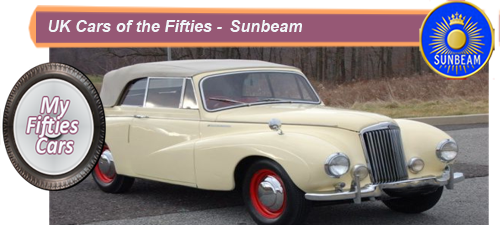 Unlike the majority of auto manufacturers who pioneered the fledgeling UK industry in the early days of the 20th century, John Marston, and Maxwell Maberly-Smith, the founders of Sunbeam Motors, were never involved in the manufacturing of either push bikes or motorbikes.
Unlike the majority of auto manufacturers who pioneered the fledgeling UK industry in the early days of the 20th century, John Marston, and Maxwell Maberly-Smith, the founders of Sunbeam Motors, were never involved in the manufacturing of either push bikes or motorbikes.
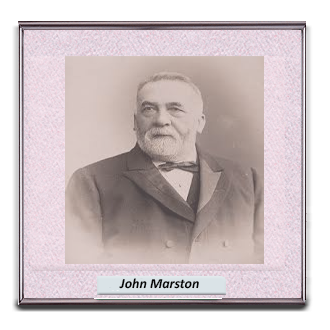 Instead, they moved straight into car production during the very early Nineteen Hundreds, selling their first innovatively designed Sunbeam for the princely sum of 130 Pounds Sterling.
Instead, they moved straight into car production during the very early Nineteen Hundreds, selling their first innovatively designed Sunbeam for the princely sum of 130 Pounds Sterling.
What made the new baby stand out from the crowd was that the vehicle was designed with its passenger seats fitted on either side of the chassis, facing in different directions.
Despite, or possibly because of this unusual design, the first Sunbeams enjoyed considerable success, with just over 400 models sold during 1904, the first year of full production.
Buoyed by his early successes, John Marston looked to the future with confidence. The first major step in his expansion plans was to form an association with the Berliet car company of France, buying up vehicle chassis from them to which Sunbeam added home produced bodies.
 Freed from the need to manufacture their own chassis, Sunbeam gradually became to adapt more of their manufacturing facilities into building most of their major mechanical parts, while continuing to import engines, gearboxes, and vehicle sub-frames.
Freed from the need to manufacture their own chassis, Sunbeam gradually became to adapt more of their manufacturing facilities into building most of their major mechanical parts, while continuing to import engines, gearboxes, and vehicle sub-frames.
![]()
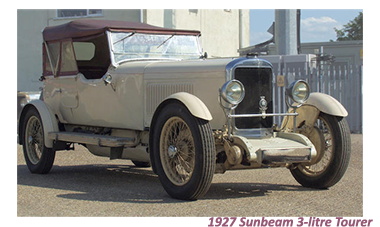 With the ability to market a broader range of more vehicles, finding larger premises soon became a major priority.
With the ability to market a broader range of more vehicles, finding larger premises soon became a major priority.
After a long search, a newer and considerably larger plant was eventually located, situated in the Midlands city of Wolverhampton.
To oversee the demends of increased production at Sunbeam Motors, Marston and Maberly-Smith persuaded or more accuratley " head hunted" Louis Coatalen for the post of chief engineer, joining the company from Humber, to their considerable chagrin.
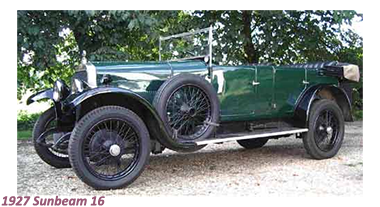 Thanks to theconsiderable industry experience and exceptional local knowledge that Coatalen had at his fingertips, the company gradually began to increase the levels of in-house production, becoming less dependent on outsourcing.
Thanks to theconsiderable industry experience and exceptional local knowledge that Coatalen had at his fingertips, the company gradually began to increase the levels of in-house production, becoming less dependent on outsourcing.
 With the company turnover increasing in volume every year, and new model ranges introduced, as the first decade that the company had been in business, fortunes at Sunbeam were looking up.
With the company turnover increasing in volume every year, and new model ranges introduced, as the first decade that the company had been in business, fortunes at Sunbeam were looking up.
![]()
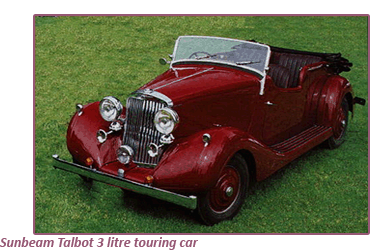 Almost as soon as the hostilities were over Sunbeam were back in business in the domestic market with sales growing and racing successes recorded.
Almost as soon as the hostilities were over Sunbeam were back in business in the domestic market with sales growing and racing successes recorded.
In 1920, Sunbeam amalgamated with French auto giant Darracq, who themselves had recently acquired Clement-Talbot.
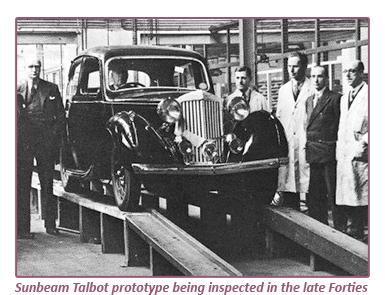
Clement-Talbot. whose principal activity was importing vehicles produced by Clements of France into the UK.
Sunbeam/ Darracq had major plans for the future, with the first step being the formation of a new company, STD Motors, with divisions that included spring manufacturing in the auto industry, commercial vehicle production as well as producing a variety of other vehicle components.
Within a few years of the amalgamation, Sunbeam began to produce electrically powered trolleybuses as well as marketing Darracq cars in the UK under the Talbot brand.
At the same time. the company high-profile racing team transferred to STD, creasingly realising the value of the exposure they were enjoying as far as marketing the cars were concerned.
Enjoying particular success and limelight during the Twenties was Sunbeam 3-Liter Super Sports, powered by a twin overhead cam engine reportedly capable of reaching speeds over 90 mph.
Off-track Sunbeam continued their record-breaking ways more spectacularly the 1922 and 1925 speed records with the Sunbeam Tiger, designed by Louis Coatalen and driven by Henry Segrave.
By the mid-Twenties, it seemed that Sunbeam could do no wrong, although behind the scenes all was not well with the company.
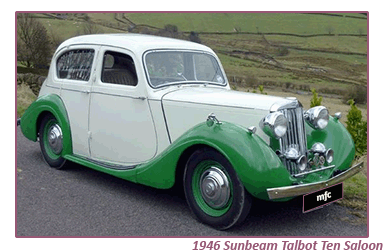 Due to the combination of financing their dramatic expansion and costs of running their racing program, by the early Thirties, Sunbeam found themselves suffering from cash flow problems.
Due to the combination of financing their dramatic expansion and costs of running their racing program, by the early Thirties, Sunbeam found themselves suffering from cash flow problems.
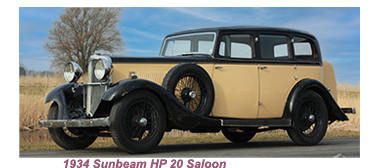 The delicate financial situation at Sunbeamwas exacerbated by the fact that they were yet to be paid for much of the work they had done for the British Government during World War One.
The delicate financial situation at Sunbeamwas exacerbated by the fact that they were yet to be paid for much of the work they had done for the British Government during World War One.
![]()
Waiting in the wings for such an opportunity were the expansion-hungry Rootes Group, who stepped in and acquired the STD Group for a song, and immediately began to market the cars under the Sunbeam-Talbot label.
Rootes, not known for sparing the rod, rapidly closed down Sunbeam’s original plant in Wolverhampton.
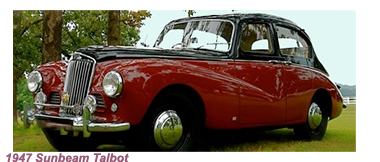 On the up-side, in the four years since acquiring STD, Rootes launched no less than four new models- the 2-Litre, 3-Litre, and 4-Litre, with the latters design and technical specifications firmly based on the Humber Snipe.
On the up-side, in the four years since acquiring STD, Rootes launched no less than four new models- the 2-Litre, 3-Litre, and 4-Litre, with the latters design and technical specifications firmly based on the Humber Snipe.
 However, just when Sunbeam was warming under the hazy glow of success, once again domestic production was put on hold with the outbreak of World War II.
However, just when Sunbeam was warming under the hazy glow of success, once again domestic production was put on hold with the outbreak of World War II.
As hostilities drew to close in Europe, Rootes wasted little time in releasing two new Sunbeam-Talbot models, the Ten and the 2-Litre, both of them Hillman-based.
Produced initially in the Sunbeam plant in London, these cars were strictly interim models, with assembly soon moved to the main Rootes factory near Coventry.
Take me back to the home page.


